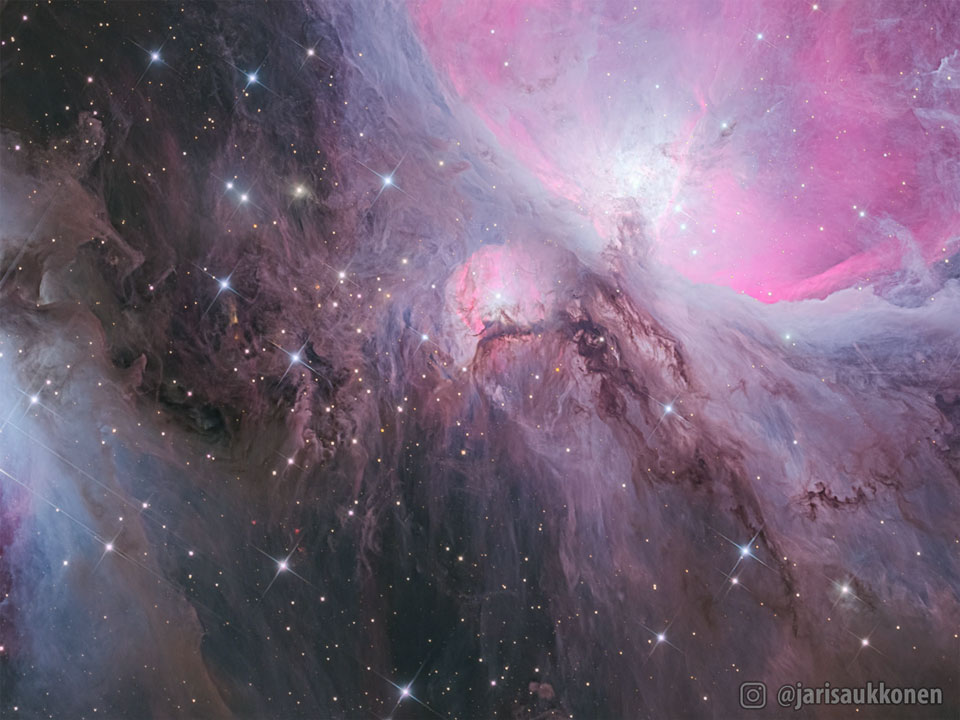I need to add something to my previous post. (And I'm not editing it, because I don't know how many edits I would make! (Like, edited 8 times by Ann. No.)
So. All the dust surrounding M43 and the star inside it, O9V-type NU Orionis, is (in my opinion) clearly the tattered remnants of the birth cocoon of NU Ori. In fact, I'd say that M43, with its round shape and dark dust lanes, resembles the Cocoon Nebula.
The Cocoon Nebula. Photo: Marcel Drechsler.
Note in the picture of the Cocoon Nebula that there is very much dust in the vicinity of it.The Cocoon Nebula itself is the small relatively round pink object at upper right, surrounded by a rather large, faint bluish reflection nebula (which is more noticeable here than in most pictures of the Cocoon). But also note all the gray dust to the left and lower left of the Cocoon Nebula.
And please note the very dark dust lanes crisscrossing the "pink face" of the Cocoon Nebula, and passing right in front of the ionizing star of this nebula, TYC 3608-1446-1, which is of spectral class B1V, just hot enough to ionize a nebula.
I think that the very dark dust lanes very close to the ionizing stars of M43 and the Cocoon Nebula are both remnants of the concentrated pockets of gas and dust that gave birth to these stars.
Certainly there are differences between the Cocoon Nebula and M43. While M43 looks round, M43 looks more like a bubble, as if it had been inflated by the star inside. Obviously NU Ori is a hotter and more powerful star than TYC 3608-1446-1.
Extremely importantly, M43 must have been enormously affected by the presence of the blisteringly hot and powerful Trapezium Cluster that is quite nearby. By contrast, the Cocoon Nebula seems to have formed in isolation.
I think that M43 and the Trapezium may have triggered one another. Clearly the power of the Trapezium is magnitudes greater than the power of NU Ori. Nevertheless, we are talking about two different sites of star formation in rather close proximity that must have sent jets and shock waves in each other's direction through the medium of gas and dust from which they were born.
The Trapezium is so hot that the dust that was surrounding it must have been violently blown away or been "radiation-cooked" into such miniature bits and pieces that it can't form dust lanes any more.
In the picture above is an interplanetary dust grain. It is so large, uneven and fluffy that we would never find such dust grains in the immediate vicinity of the present-day Trapezium, because the extremely violent onslaught of far ultraviolet light from
Theta 1-C Orionis will have destroyed them. But I guess there may be such dust grains in the darkest dust lane that seems to cross the face of M43, because that dust lane is so thick that individual grains shield each other from the onslaught of ultraviolet light from nearby stars.
But make no mistake, the dust lanes near M43 are evaporating, too.
Ann
 M43: Streams of Orion
M43: Streams of Orion






